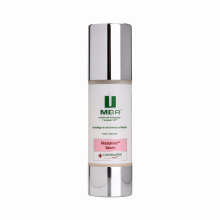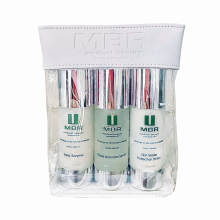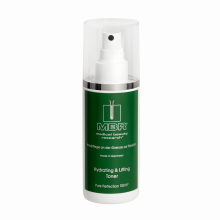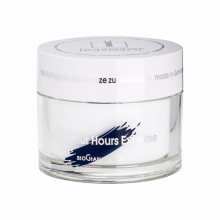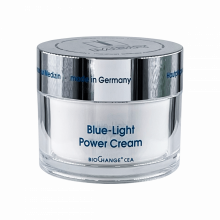Hyaluronic Acid and Skin
If you stripped the middle layer of the skin, the dermis, of all its cells, the skin matrix would be what would remain. The skin matrix makes up the various properties of the skin, including mechanical resilience, structural integrity, stability. The breakdown of the skin matrix is a critical factor in the prominence of the signs of aging skin, including wrinkles. The most recognizable parts of the skin matrix are collagen and elastin (the structural proteins). Elastin and collagen are the keys to healthy skin and a youthful appearance. But the presence of these skin proteins is not enough; the skin matrix also has to have appropriate fillers; these fillers give the skin its mechanical cushioning, retain moisture, enhance barrier function, and so on. The leading skin matrix fillers are glycans (glucose-based polymers that include glycosaminoglycans and proteoglycans). As far as skin rejuvenation goes, the critical glycan is hyaluronic acid (otherwise known as hyaluronan, hyaluronate, or HA).
Chemistry of hyaluronic acid
Hyaluronic acid is a polymer whose unit consists of D-Glucuronic acid and N-Acetyl Glucosamine.
Products containing hyaluronic acid precursors
HA is synthesized by the enzymes called hyaluronan synthases. People have at least three types of hyaluronic acid synthases: HAS1, HAS2, and HAS3. HAS1 and HAS2 synthases produce high molecular weight HA, whereas HAS3 produces low molecular weight HA. Hyaluronan is degraded by the enzymes called hyaluronidases, of which there also appear to be several types.
Skin physiology and hyaluronic acid
Hyaluronic acid has many uses in the body; it is particularly prevalent in connectives tissues. General purposes of HA in the skin include:
- Retaining moisture
- Raising levels of viscosity and lowering the permeability of extracellular fluid.
- Adding to the mechanical resilience and suppleness of the skin
- Control of tissue repair
- Control of movement and growth of cells
- Control of the immune and inflammatory responses
It is vital to recognize that the physiological effects of hyaluronic acid are primarily dependent on the chains' molecular weight (size). Remarkably, the reasonably small HA molecules (their weight is less than that of about 20,000 DA) seem to trigger the beginning wound healing process by activating different kinds of immune cells and inflammatory responses. The average tissue injury results in a raised level of degradation of the extracellular matrix (particularly HA); it is reasonable that the degradation fragments would be the main indicators of injury and would, in turn, start the healing process of the wound. At the same time, large HA molecules seem to slow the local immune response and swelling. Thus, logic would say that the large HA molecules should emit a message that the skin is not injured and that repair is not needed.
Products with HA
Hyaluronic acid and its effects on aging
The level of hyaluronic acid in the skin decreases as people get older. (It peaks in the teenage years.) This lowered level of hyaluronan makes the skin drier as well as thinner, and less adaptable. The lower levels of HA may also harm the skin's capacity to repair itself and may even affect the synthesis and deposition pattern of the other components of the skin matrix.
Is it possible to raise hyaluronic acid levels in the skin?
Turning around the age-driven decline in hyaluronic acid content in the skin is an increasingly popular topic in skincare. Using hyaluronan would augment other methods of preserving the vitality of the skin matrix (this includes replacing elastin and collagen). Sadly, at this time, there is no easy, cheap, or particularly effective method of preserving or restoring HA levels in the skin. Below, you will find some options of what is either on offer now or may be available in the future.
Hyaluronic acid to be applied topically
Hyaluronic acid that can be applied topically in gels and serums is generally available, but it is questionable how effective it really is.
It has been proved that HA can provide an adequate level of surface skin moisturizing, either on its own or when used with other moisturizers. However, the question of whether or not concentrated HA compounds should be used in dry climates is still being debated. In conditions where the air is arid, HA may remove water from the skin instead of moisturizing it. The best way to use HA in moisturizers still needs more research.
The question remains, can topical HA do more than just moisturizer? Can it work its way through into the dermis and help regenerate the skin matrix? In most instances, large molecules cannot penetrate the skin, or if they do, it is at deficient levels. Therefore, it is more likely that medium to large size HA molecules (with a molecular weight that exceeds 20,000 Da) will not penetrate far enough into the dermis in large enough quantities to have any effect. However, it may be possible for smaller HA molecules (5,000 - 20,000 Da) to work their way into the dermis in reasonable amounts. This, however, might not be as positive as it sounds. Assuming that the smaller HA molecules do get into the dermis, they will more than likely set off some elements of the wound healing process (as discussed above); these can include immune activation, swelling, cell division, blood vessel growth, new skin matrix synthesis and so on. The result might be either the breakdown of the matrix or enhanced skin aging. More research is required to answer this question.
Hyaluronic acid-based fillers
Bearing in mind the fact that large and medium-sized hyaluronic acid molecules cannot penetrate the skin in large quantities, another option is administering the HA via injection. This method may enhance localized imperfections (like wrinkles, depressed scars, and furrows), but it will not revive the skin as a whole. For details, see our article on HA-based fillers.
Increasing the production of hyaluronic acid
One method of increasing the HA concentration in the skin would be to stimulate its growth. Sadly, there is little information on practical methods of doing this. One way to go about it would be to find a way to give the body more elements to enhance the production of HA, such as glucosamine and N-acetyl-glucosamine. Further research is necessary to determine if topical or oral administration of HA building blocks can raise the synthesis of HA in the skin, particularly in reference to medium or large molecules. (This method has been proved to work in cartilage, but every tissue has different properties). Another method would be to define agents that raise the level of activity of hyaluronan synthesis or, more simply put, having the enzymes produce HA. An ideal working agent would stimulate both HAS1 and HAS2, the enzymes that produce molecularly heavy HA. Sadly, so far, no appropriate substance appears to be available at this time.
HA production boosters
Slowing the decomposition of hyaluronic acid
If raising the rate of HA synthesis is a problem or not done at a high enough level, then another means of dealing with the problem could be to slow down its decomposition. One method of doing this would be to stop the HA degrading enzyme hyaluronidase. Sadly, finding effective hyaluronidase inhibitors seems to be as hard to find as substances that increase hyaluronan production. There is, however, some light at the end of the tunnel. One possibility is escin, a saponin that is removed from the horse chestnut. In some clinical trials, it was proved to strengthen veins and boost venous insufficiency. The theory is that this is working by the blocking of hyaluronidase and elastase in vein walls. In other words, it might be possible to inhibit these enzymes in the skin that cause the breakdown of the matrix.
Products with Rosmarinyl Glucoside inhibiting hyaluronidase
The other possibility is a variant of ascorbyl palmitate, a popular ingredient in skincare. But Ascorbyl palmitate is not as good a skincare product as everyday vitamin C derivatives because it is not an effective activator of collagen production. A different type (isomer) of ascorbyl palmitate is known as L-Ascorbic Acid 6 - Hexadeconoate has been proved to stop hyaluronidase in certain species of mammals. If this will work in human skin remains to be tested. It does work; then, ascorbyl palmitate may become a more popular ingredient in skincare products.








